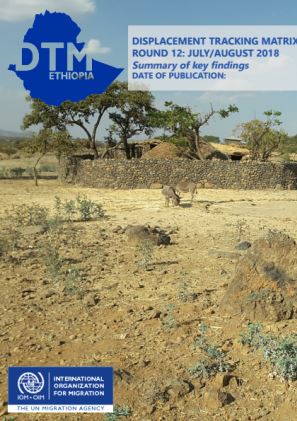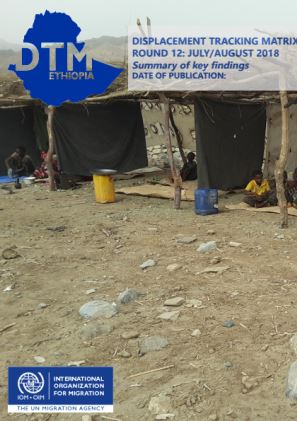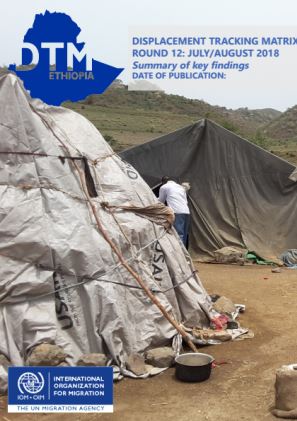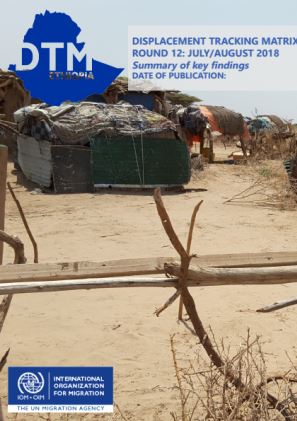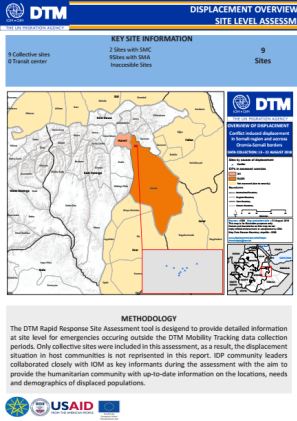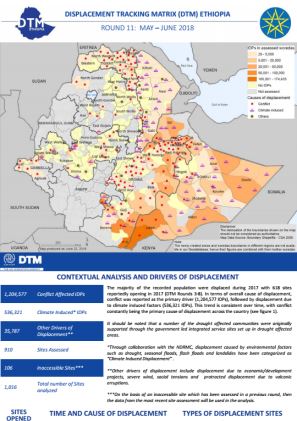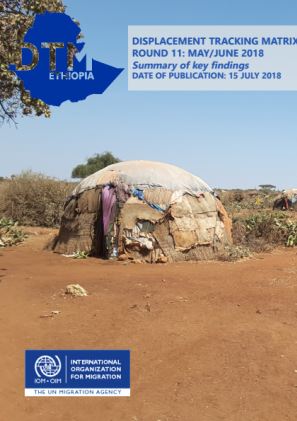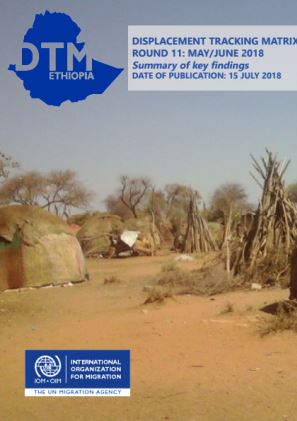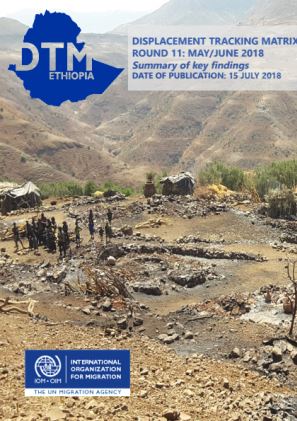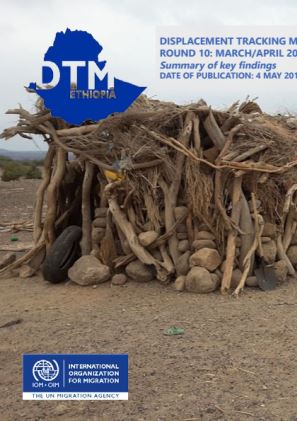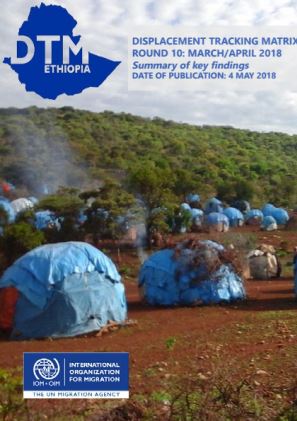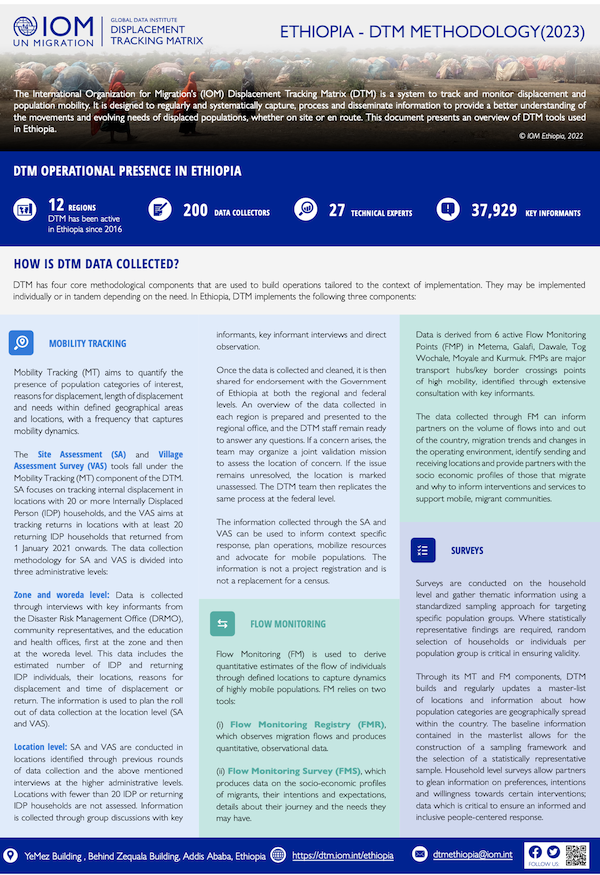-
Countries
-
Data and Analysis
-
Special Focus
-
Crisis Responses
Ethiopia
Error message
The submitted value field_published_date_value in the Sort by element is not allowed.
About Ethiopia
Ethiopia faces one of the most complex human mobility environments in the world, with a range of social, economic, political, and climatic factors driving populations within and outside its borders.
IOM’s Displacement Tracking Matrix (DTM) is a system that monitors human mobility within Ethiopia to provide essential insights into the location, vulnerabilities, demographic breakdown and needs of displaced and mobile populations to provide the Government of Ethiopia, humanitarian and development partners, as well as donors and other relevant stakeholders with a useful evidence base for planning, advocacy, and response.
Since its launch in September 2016 in Ethiopia, the DTM has grown to be a fully integrated component of Ethiopia’s national and sub-national information management architecture, as it is the official source of data on internal displacement in the country.
In Ethiopia, mobility tracking captures internal displacement and return through three annual rounds of Site Assessments (focused on IDPs and the availability of services in their areas of displacement) as well as returning IDPs through the Village Assessment Surveys (focused on host community capacity to absorb returns targeting IDPs, returning IDPs, returned migrants and host community members and their access to services with a focus on livelihoods and reintegration). Mobility tracking data is largely used to inform humanitarian response and development planning and as such is coordinated with both humanitarian and development actors in country as well as with the Ethiopia Disaster Risk Management Commission. Flow Monitoring captures inter-and intra-regional migration flows daily at key identified transit locations. This information is largely used to inform more developmental programming including migrant assistance and protection programming. This data is also shared with humanitarian and development counterparts in the country and is collected in close coordination with the Ministry of Labor and Social Affairs. Both DTM components intend to provide an evidence-base for programming and policy that is increasingly integrated and area-based. In addition to mobility tracking and flow monitoring, DTM Ethiopia also deploys thematic household level surveys to provide representative, granular information which can be triangulated with pre-existing DTM data collected through key informants and focus group discussions. This data enables the humanitarian and development communities to obtain important insight into the needs, conditions, vulnerabilities, and intentions of IDPs which can be particularly useful in informing programs, especially with regards to durable solutions, livelihoods, and other Humanitarian Development Nexus (HDN) related programming and policy initiatives.
DTM Ethiopia currently deploys over 200 staff and enumerators to track displacement, returns and migrant movements in the country.
Current Donors
- USAID
- ECHO
- Canada
- Japan
- EHF
Ethiopia — National Displacement Dashboard (September — October 2018)
The majority of the recorded population were displaced during 2017 with 599 sites reportedly opening in 2017 (DTM Rounds 3-8).
Ethiopia — Interactive Site Profile Generator 13 (September — October 2018 )
The interactive site profile generator can be used to create site profiles for any site assessed in the round. Simply select the site you wish to have a profile for and generate the new file.
Ethiopia — Displacement Report 12, Tigray Region (July—August 2018)
30,114 displaced individuals comprising 11,316 households in 85 displacement sites were identified in Tigray region.
Ethiopia — Displacement Report 12, Oromia Region (July — August 2018)
823,664 displaced individuals comprising 138,740 households in 459 displacement sites were identified in Oromia region.
Ethiopia — Displacement Report 12, Afar Region (July — August 2018)
53,580 displaced individuals comprising 8,914 households in 54 displacement sites were identified in AFAR region*. These figures represent an increase of 179 in the total individuals (0.34%) and no increase in sites since round 11 (May/June 2018).
Ethiopia — Displacement Report 12, Amhara Region (July — August 2018)
5,783 displaced individuals comprising 1,500 households in 34 displacement sites were identified in Amhara region.
Ethiopia — Displacement Report 12, Gambella Region ( July — August)
12,735 displaced individuals comprising 2,545 households in 13 displacement sites were identified in Gambella region.
Ethiopia — Displacement Report 12, Somali Region (July — August 2018)
1,091,210 displaced individuals comprising 179,526 households in 385 displacement sites were identified in Somali region.
Ethiopia — National Displacement Dashboard 12 (July — August 2018 )
The majority of the recorded population were displaced during 2017 with 596 sites reportedly opening in 2017 (DTM Rounds 3-8).
Ethiopia — Interactive Site Profile Generator 12 ((July — August 2018))
The site profile generator is a spreadsheet which can create site profiles for all sites covered in Round 12.
Ethiopia - East Hararge-Harar Rapid Response Assessment 1 (13—22 August 2018)
The DTM Rapid Response Site Assessment tool is designed to provide detailed information at site level for emergencies occuring outside the DTM Mobility Tracking data collection periods.
Ethiopia — Gedeo and West Guji Rapid Response Assessment 2 (12 — 16 July 2018)
DTM Rapid Response Assessments are designed to provide up-to-date information on large scale population displacement occurring outside the DTM Mobility Tracking data collection periods.
Ethiopia — National Displacement Dashboard (May — June 2018)
The majority of the recorded population were displaced during 2017 with 618 sites reportedly opening in 2017 (DTM Rounds 3-8).
Ethiopia - Interactive Site Profile Generator 11 (May - Jun 2018
The site profile generator is a spreadsheet which can create site profiles for all sites covered during the round 11.
Ethiopia — Displacement Report 11, Tigray Region (May - June 2018)
30,374 displaced individuals comprising 10,994 households in 81 displacement sites were identified in Tigray region.
Ethiopia — Displacement Report 11, Somali Region (May - June 2018)
873,666 displaced individuals comprising 142,014 households in 362 displacement sites were identified in Somali region.
Ethiopia — Displacement Report 11, Oromia Region (May - June 2018)
777,047 displaced individuals comprising 126,777 households in 459 displacement sites were identified in Oromia region.
Ethiopia — Displacement Report 11, Gambella Region (May - June 2018)
13,477 displaced individuals comprising 2,695 households in 15 displacement sites were identified in Gambella region.
Ethiopia — Displacement Report 11, Amhara Region (May - June 2018)
6,810 displaced individuals comprising 1,613 households in 32 displacement sites were identified in Amhara region.
Ethiopia — Displacement Report 11, Afar Region (May - June 2018)
53,401 displaced individuals comprising 8,914 households in 54 displacement sites were identified in Afar region.
Ethiopia — Displacement Report 10, Tigray Region (5 March —5 April 2018)
30,112 displaced individuals comprising 10,892 households in 78 displacement sites were identified in Tigray region.
Ethiopia — Displacement Report 10, Afar Region (5 March —5 April 2018)
56,375 displaced individuals comprising 9,408 households in 56 displacement sites were identified in Afar region. These figures represent an increase of 3,652 in the total number of displaced individuals (+6.93%) since round 9 (January/February 2018).
Ethiopia — Displacement Report 10, Oromia Region ( 5 March —5 April 2018)
721,307 displaced individuals comprising 118,227 households in 420 displacement sites were identified in Oromia region.
Ethiopia — Interactive Site Profile Generator 10 (May — June 2018)
The site profile generator is a spreadsheet which can create site profiles for all sites covered during round 10.




